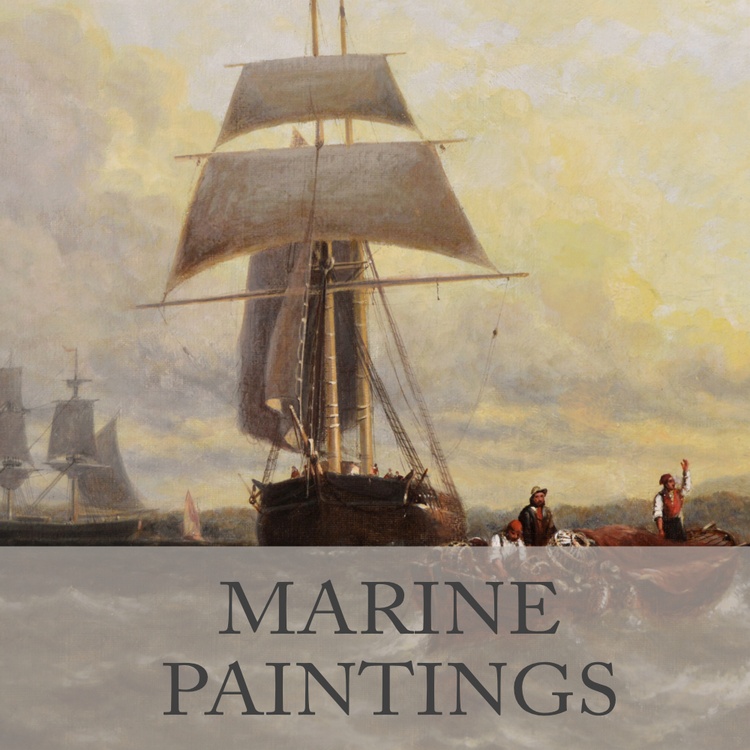News
Marine Paintings

Marine Paintings of the Victorian age...
Since the Dutch Golden Age, maritime art had begun to emerge as a genre in its own right. The idea of marine painting as a specialism quickly became rooted in other countries, particularly those whose seafaring capabilities rivalled that of Holland. After the first Dutch artists arrived in England during the 17th century and brought with them their aesthetic style, the tradition of painting ships whether at sea or by the coast became firmly established in the country. As sea trade flourished, the captains of merchant ships soon joined the ranks of senior naval officers who commissioned marine artists to paint their ships.
During the 18th century, the geography of Britain and her naval prowess helped to bolster interest in maritime art, so much so that the navy employed artists to document historic battles at sea. Some were also commissioned to travel on expeditions to help record the coastlines and topography of other countries. A number of artists also began to emerge who had previously worked on ships, some having been employed because of their skill in producing navigational aids. However, the emphasis at this time remained on the ships themselves.
Although marine paintings were initially mainly to do with the prowess of Britain at sea, by the 1800ís the genre developed into more than an accurate portrayal of ships. After the battle of Trafalgar in 1805 and a series of popular fiction works such as the Hornblower Saga detailing adventures at sea, the view of maritime life had become romanticised in the public eye. Many landscape artists were inspired to create works that appealed to this and produced paintings that were more about the atmosphere and location and less about accurate portrayals of ships.
By the Victorian age, marine art which had previously been focused on ship portraits had widened to encompass two more categories of ships at sea or inland and coastal and harbour scenes. Like a lot of landscape views, inland and costal scenes tended to offer more variety for the artist. They would often feature smaller vessels such as fishing boats and focus more on the everyday life of people who worked on and lived by the sea. Many of these included figures on board a ship or in a rowing boat. Some would focus more on the shore with people selling fish or perhaps a mending their nets on a beach. A number of Victorian artists successfully managed to combine genre and marine paintings to great effect. Many Victorian artists helped develop the genre further by making a living out of painting the busy working docks and shipping lanes of the age at important confluences such as the Thames and the Medway.
Although much of Britainís sea trade has waned or evolved, the appetite for marine paintings particularly those of a bygone era seems to be stronger than ever. In the same way that landscape paintings of the Victorian age have increased in demand, marine art has also experienced a resurgence. However, marine paintings are not simply a reminder of the past; they are perhaps a symbol of the deep respect and awe we have of the vast and unchanging sea that surrounds us.
© Benton Fine Art
Click here for a selection of our marine and seascape paintings.


